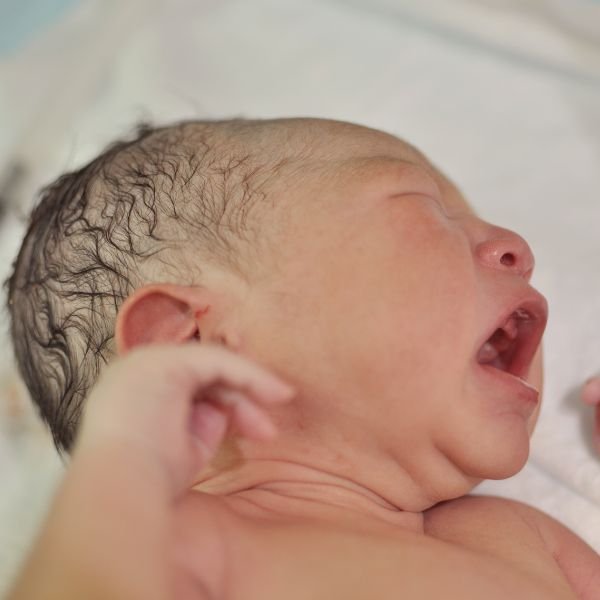Recognizing and Responding to an Acute Surgical Emergency
Testicular torsion is a serious and time-sensitive condition where one or both testicles twist within the scrotum, cutting off their blood supply. Known as “Acute Scrotum,” this condition represents a common pediatric surgical emergency, affecting approximately 1 in every 4,000 children. The condition requires immediate medical attention to prevent permanent damage to the testis.
What Causes Testicular Torsion?
Testicular torsion primarily occurs due to a congenital condition known as the “Bell-Clapper deformity.” In this condition, the testicle is not properly anchored within the scrotum and lies in a horizontal position, making it prone to twisting. This abnormal positioning increases the risk of torsion, especially after minor trauma, vigorous physical activity, or even without any clear triggering event. When the testicle twists, the blood supply is interrupted, leading to swelling and severe pain. If the condition is not promptly treated, it can result in ischemia (lack of blood flow) and eventually the loss of the testicle.
Recognizing the Symptoms of Testicular Torsion
The hallmark symptoms of testicular torsion include sudden, severe pain in the scrotum, swelling, and redness. The affected testicle may also feel hard to the touch. In some cases, boys may experience nausea and vomiting as well. These symptoms can appear suddenly and often without warning, making it crucial for parents and caregivers to seek immediate medical attention if they suspect testicular torsion.
Urgent Evaluation and Diagnosis
When a child presents with symptoms of testicular torsion, it is essential to seek urgent evaluation by a healthcare provider. A physical examination is the first step, during which the doctor will look for signs such as tenderness, redness, swelling, and possible retraction of the testicle. Specific diagnostic tests, like the cremasteric reflex (a reflexive pulling up of the testicle when the inner thigh is stroked) and Prehn’s sign (relief of pain when the scrotum is lifted), can help differentiate torsion from other conditions. However, these tests may not always be definitive, and an immediate ultrasound with Doppler evaluation is often necessary to assess blood flow and confirm the diagnosis of torsion.
Differential Diagnosis: Other Conditions with Similar Symptoms
Several other conditions can mimic the symptoms of testicular torsion, making it important to consider differential diagnoses:
- Epididymitis: This is inflammation of the epididymis, the tube at the back of the testicle that stores and carries sperm. It can cause pain and swelling similar to torsion.
- Trauma: Direct injury to the scrotum may result in symptoms that are similar to those of torsion.
- Obstructed Hernia/Hydrocele: In these conditions, intestinal loops or fluid from the peritoneal cavity collect in the scrotum, leading to swelling and discomfort that can be confused with torsion.
Treatment of Testicular Torsion
Testicular torsion is a surgical emergency, requiring immediate intervention under general anesthesia to untwist the testicle and restore blood flow. During the procedure, a small incision is made in the scrotum, the testicle is untwisted, and it is then secured with sutures to prevent recurrence. To reduce the risk of future torsion, the opposite testicle is also typically fixed in place during the same procedure. If there has been a significant delay before surgery, and the testicle appears non-viable due to prolonged ischemia, it may need to be removed. The best outcomes are achieved when surgery is performed within 6 hours of symptom onset, but even intervention within 48 hours can be beneficial.
Postoperative Care and Long-Term Follow-Up
After surgery, the child will have a supportive scrotal dressing and typically stay in the hospital for about 24 hours. Upon discharge, they are prescribed oral antibiotics and painkillers to manage any discomfort. The first follow-up visit usually occurs one week post-surgery for dressing removal and a scrotal examination. Parents may notice residual swelling and minor pain, which generally resolve over the following weeks.
Long-term follow-up is crucial to monitor the size and growth of the testicles. Regular check-ups are recommended every six months for the first year after surgery, then annually until puberty. If there is a significant discrepancy in testicle size, an ultrasound may be conducted. Testicular function should also be assessed, particularly in adulthood if there are concerns about fertility.
In conclusion, testicular torsion is a medical emergency that requires prompt diagnosis and surgical intervention to preserve testicular function and prevent long-term complications. Parents and caregivers should be vigilant in recognizing the symptoms and seeking immediate medical attention to ensure the best possible outcome for their child.



